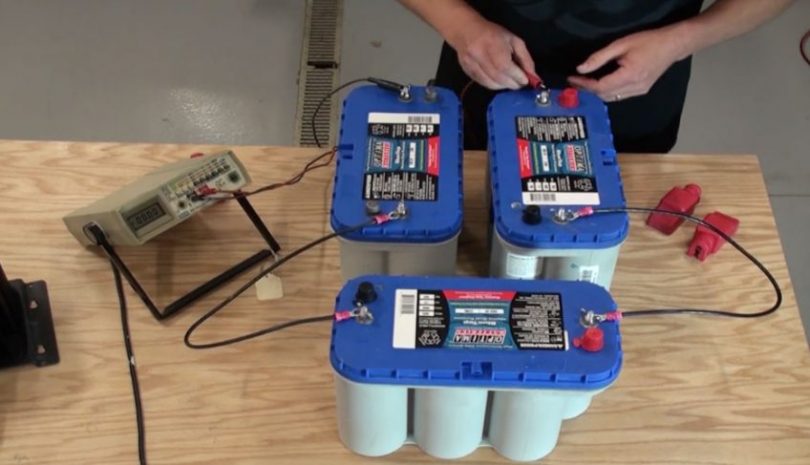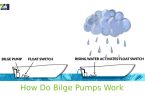Knowing how long your trolling motor battery would last is indispensable for a productive time on the water. You certainly don’t want to miss a catch because your battery runs flat, neither do you want to be stranded on the water. If you already have a trolling motor battery, this article would enlighten you on how to go about calculating how long your battery can power your trolling motor. As well as give you a few maintenance tips. If you are about to make a purchase decision? We got you covered with necessary info on a trolling motor battery life.
Trolling Motor Battery Life – How Long Will a Battery Last?
How long your trolling motor battery would last depends on a number of factors. A rundown on these factors are below:
Quality
The quality of your battery would determine how long it would last. This boils down to what type of battery? It is a fact that deep cell batteries are the best but, what type of deep cell battery? Are you using an AGM, a flooded cell, or a Gel battery? These battery categories are all excellent, but an AGM or Gel battery is best if you can foot the cost. Using a dual-purpose battery is a good choice. Although, it cannot do as much as an individual starter battery, and a deep cell battery no matter how impressive its features are.
Age
A trolling motor battery certainly doesn’t appreciate over time. How fast it depreciates is dependent on the quality of the battery, and healthy maintenance culture. Poor quality of batteries would quickly depreciate within a year while a sound battery should last 2-3 years. Poor maintenance culture cannot rescue any battery from fast depreciation. Their maintenance-free nature doesn’t cover for overcharging, regular cleaning, or overcharging. They need the owners to make these routine checks!
How Charged?
How well your battery is charged after the last expedition determines how long it would last on your next voyage. This is not a call to overcharge your battery but, to know your battery well and monitor how much power you are consuming. Deep cell batteries can dispense 85%, but manufacturers recommend using 45% before recharging. Enhanced battery charger efficiency will contribute to extending the lifespan of the battery. Conclusively, know your manufacturer’s instruction on how frequently you can charge the battery and ensure the battery’s power is never totally depleted. Charge if necessary after each expedition if you wouldn’t be using the battery for a long time plug it to a trickle charger.
Capacity
Capacity refers to how much power your battery can deliver over time. This is slightly affected by the amperage draw of your trolling motor. The amperage draw refers to how many amps power your trolling motor consumes for the battery if it is working at maximum speed. The maximum speed is the parameter most manufacturer’s use to measure the amperage draw. Nevertheless, from the amperage draw at maximum speed, you can calculate for other speeds. This means at speed slower than the maximum speed your trolling motor would be consuming less ampere power from the battery.
How to Calculate Your Battery Run Time
This is calculated by dividing the Ampere hour rating of your battery by the average draw of the trolling motor. The ampere-hour rating of a battery is how much power it can dispense over time. For example, you buy a 35Ah power battery and the average draw power of your trolling motor is 7 Amp. Dividing through equals 5 hours run time.
Note: The average draw in terms of Amp in the manual of the trolling motor is usually the amp power consumed at maximum speed. Also, if your battery doesn’t have an ampere power rating divide the Reserve capacity (RC) by 2.4
Other Factors That Can Affect the Run Time of a Battery
Weather conditions can affect the productivity of a battery. Batteries tend to discharge, or not start the boat because of cold weather conditions. Some batteries (AGM, Gel) have been built up to still be productive in cold weather. If the boat is running against the wind, there is a higher chance that the Amperage draw would increase because the trolling motor is doing more work.
How to Extend Battery Life
We all want a battery that would serve for a longer time. Below are factors to consider if you wish to extend your battery life.
1. Use Larger Trolling Motors
A larger trolling motor has the same required productivity a small trolling motor would serve at less amperage draw. A 24V or, 36V multi-battery trolling motors would provide the same thrust smaller motors would provide. The capacity of the motor is dependant on the size and quality of the motorized kayak. Please note that a larger trolling motor doesn’t translate to a longer boat; a bigger boat length would require a higher voltage battery (say 24V or 36V).
2. Variable Speed Motor
Using a variable speed motor helps to regulate the speed of the trolling motor. The amperage draw of a trolling motor increases as the speed of the trolling motor increases. The advantage of a variable speed motor is that it allows you to fix a particular speed for the trolling motor. You can alternate the required speed as you so desire.
3. Charge When Necessary
Never fully deplete your battery. Deep cycle batteries can discharge up to 85% of their reserve capacity (stored power). Draining the battery to that rate means in six months the battery wouldn’t serve its purpose anymore. A battery life indicator is a tool that would indicate your battery reserve capacity and would help you determine if you need to charge your battery. In your bid to avoid depleting all your battery’s power do not overcharge, that is where a battery life indicator would come handy.
4. Prepare for the Off-Season
Leaving a battery uncharged for a long time would reduce the performance and efficiency of a battery. By off-season, we mean seasons of prolonged non-usage of your battery. To tackle this plug your battery to a trickle charger to keep it charging at a slower pace for a long time. Another option is to charge your battery monthly alongside a routine maintenance check.
Trolling Battery Maintenance
Maintaining your battery is essential to benefit from its functions optimally. Some batteries (AGM, GEL) are maintenance-free but still require routine checks. Please note that a flooded cell battery would require strict maintenance for longevity and productivity. Below are a few maintenance tips for a more extended and efficient battery life.
- Make routine checks on your battery and charge the battery when necessary. Depleting your battery power reduces longevity and recharging potential power of your battery.
- Wet cell batteries would require periodic cleaning (with a cleaning agent) to clean off the build-up of sulfate.
- Clean-up corrosion caused by leakage because of overcharging or heat. Use a baking powder and a brush to clean while wearing protective gloves. Dry-clean the terminals and cables after you are done brushing corrosion off.
- Check the fluid level of Wet cell batteries and refill them as necessary.
- Use the right charger and adhere to the manufacturers charging requirement. A multi-stage charger delivers charges in stages and stops charging when a battery the battery is charged.
- Use a trickle charger to charge your battery during off-seasons or, make monthly routine checks depending on the quality of your battery.
When Should You Replace Trolling Motor Batteries?
Change trolling batteries every 2 years for peace of mind and tons of power.
It’s not a problem to use them in the third year. But if you do something where failure isn’t an option, you want to replace them before that happens.
Take out the batteries when your boat is stored for couples of months. Use a smart charger in the recondition mode to charge them at home. This will make your batteries last for 4 years before you replace them.
Good battery chargers also extend the lifespan of trolling batteries. Old batteries are supposed to degrade over time but quality chargers will make them run over 4 years without major issues. It’s even a better option than getting new batteries every 1.5 years.
FAQs:
1. What type of charger should I use for trolling motor batteries?
Ans. Chargers with higher amperage rating numbers recharge batteries faster. For example, 5 amp chargers fully recharge mid-range trolling motor batteries in 10-12 hours. This is excellent for most fishermen. If you have 120 amp hours or higher batteries or looking for fast charging options, you should go for 10 or 15 amp chargers.
2. Do I need to charge trolling motor batteries each time I use them?
Ans. Both boat and trolling motor battery manufacturers recommend a complete recharge of batteries ASAP after you use them. Lead sulfate forms inside the cells when you leave trolling motor batteries uncharged with less than 12.4 volts. This severely impacts the performance and lifespan of batteries.
3. What is a good reserve capacity for trolling motor batteries?
Ans. Batteries that have at least a 100-ampere hour rating and 175-minute Reserve Capacity are good for trolling motors.
4. How to store trolling motor batteries?
Ans. Storing trolling motor batteries in a temperature-controlled, clean, and dry place helps you get the best performance. You also want to do regular maintenance and use trickle chargers to keep them at maximum charge during the offseason.








Leave a Comment